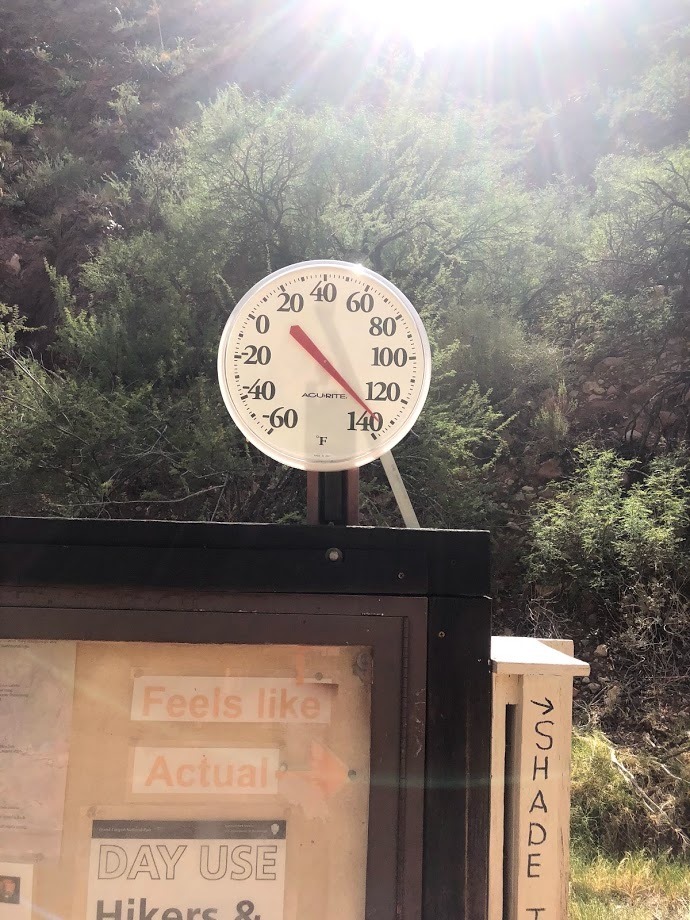Grand Canyon is an unforgiving environment. The heat inside the canyon can cause shoes to come apart, and heavy hiking boots can trap sweat and lead to painful blisters. Before setting off on a hike, understand the limitations of yourself and your gear. https://t.co/PLebJv4uTz pic.twitter.com/fvB4DgHcl2
— Grand Canyon NPS (@GrandCanyonNPS) June 22, 2020
https://platform.twitter.com/widgets.js
Summer temperatures in Grand Canyon National Park are already super hot, around 100F during the day. GCNP rangers took to social media to warn recreators that it’s so hot, peoples’ shoes are literally melting apart in the canyon. Rangers say during a normal summer they respond to heat exhaustion calls every day, so they’re trying hard to warn people to plan well. It’s gonna be dang hot!

Dehydration happens quickly in dry mountains and deserts. Especially in desert areas, where freshwater sources are scarce and the heat is intense. Your body can lose more than 2 quarts of fluid per hour while hiking uphill in direct, strong sun. Salty foods, electrolyte mix, extra water, sunscreen, long sleeves, and breathable clothes are good options to prepare for a safe venture into the desert. Breathable shoes help to prevent moisture and blisters which can slow you down too.

Terrestrial desert terrain and the usually high-pressure weather systems they present mean that the area will heat up like crazy during the day, and cool off immensely during the night. Hot desert days are usually followed by frigid desert nights, as the ground radiates all its heat away to the stable high-pressure atmosphere above. GCNP recommends starting very early in the day while it is still cool, finding a shady spot to rest during lunch, and continuing on when conditions allow in the afternoon.
